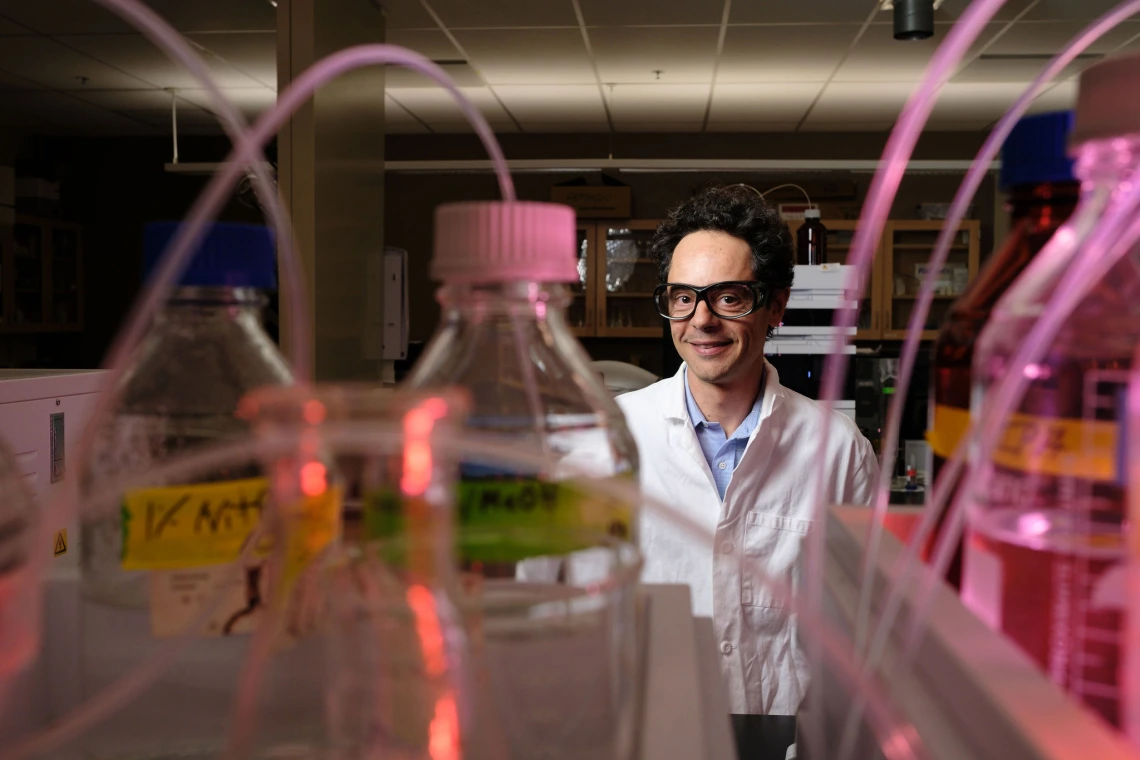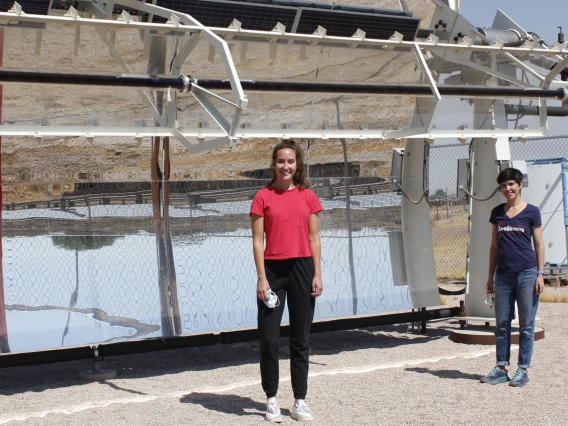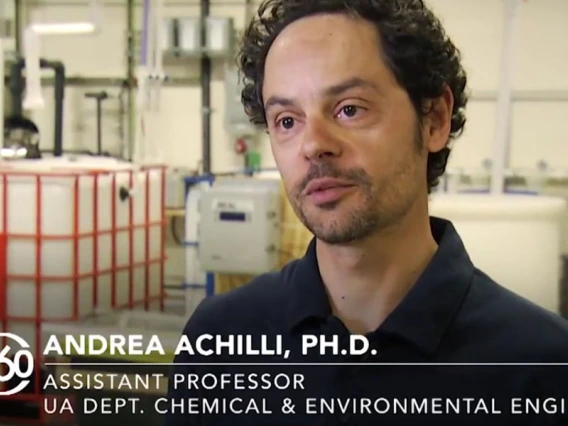University and Partners Form Consortium to Address Southwest Water Concerns
As traditional sources of water run low, concern around Arizona's water supply is growing. A team of researchers is working to address the problem by advancing water reuse techniques.

Andrea Achilli is the principal investigator on a project that aims to improve water security and water reuse methods in the arid southwestern United States.
The Colorado River, which provides drinking water to tens of millions of people and irrigation water to more than 5 million acres of farmland, has dropped by one-third in recent years. Arizona recently limited housing construction in the Phoenix area based on projections that groundwater will be unable to meet growing demand.
The University of Arizona has received $4 million for phase one of a project to improve water security and water reuse methods in the arid southwestern United States. Phase two will be awarded an additional $3 million in funding, with the possibility of another $3 million for phase three. Together with the University of Southern California and the University of Nevada, Reno, which each received grants of the same size, the university is launching the Consortium for Potable Water Reuse. The funding agency is the U.S. Army Engineer Research and Development Center's Construction Engineering Research Laboratory.
"We are the leading schools that do research on water reuse in the Southwest, which is where alternative water sources and potable use is needed," said grant principal investigator Andrea Achilli, a UArizona associate professor of chemical and environmental engineering and researcher at the university's Water and Energy Sustainable Technology, or WEST, Center. "What we want to do is to allow for self-sufficiency and resiliency in the Southwest."
The consortium will bring together experts in diverse fields to advance water treatment technologies, make water reuse systems more efficient and drive sustainable practices. The UArizona team, which includes researchers in chemical and environmental engineering, systems and industrial engineering, environmental science, and microbiology, will focus on using automation and decentralization to improve potable water reuse deployment and adoption. Engineering co-principal investigators are Jim Farrell, Kerri Hickenbottom and Eduardo Saez of chemical and environmental engineering and Mohammed Shafae of systems and industrial engineering.
"The University of Arizona's water programs are consistently ranked among the top in the world thanks to the incredible faculty and staff we have working in this vital area," said University of Arizona President Robert C. Robbins. "Their expertise will be key in ensuring potable water for Southwest communities as we face water usage cuts and historic drought. I am proud of our resourceful and forward-thinking faculty members in engineering and the WEST Center for building an interdisciplinary team to do this important work."
The Power of Decentralization
Achilli believes decentralized water treatment systems, which manage water at the neighborhood level – or, in densely populated areas, even the building level – are key to better enabling water reuse. Some cities and large companies, such as Intel, are already experimenting with this. Achilli draws a comparison to the growing popularity of home solar panels.
"Water is messy, but I think the way we are going to deal with water is the same way we are starting to deal with other major systems, like the electric grid," he said. "If we really want to enable water reuse, we need to transform the systems from centralized – like we've been doing for the past 100 years – into decentralized, autonomous systems."
Avoiding moving water back and forth between a neighborhood and a treatment plant saves energy, time and money. It also allows people to be more familiar with their water sources; for example, residential systems will only have residential pollutants, Achilli said.
"With this, we have a better idea of the contaminants coming into our systems and can tailor our treatment systems to efficiently remove them," Hickenbottom said. "Because we know the quality and quantity of our water resources, we will have more security and resiliency in our treatment systems. It's going to help us be in a position where we're not panicking about finding our next source of water."
The Role of Automation
In order for water treatment to be managed at the neighborhood level, Achilli said, it needs to be simple yet sophisticated. Right now, it's not. In fact, Achilli said, much of the software used in water management systems is outdated – and essentially none of it operates autonomously.
High-end systems, like the one used by Achilli and his team at the WEST Center, require a team of experts with a unique set of skills in experiments, programming, coding and analyzing systems.
Someday, autonomized decentralization could allow for in-house water reuse systems in individual houses or apartments. Achilli compares the idea of these in-house systems to washing machines, which anyone can easily operate at home without specialized skills.
"Nobody is an expert in washing machine technologies," he said. "We just use it, right? That's the level where we need to get to in order to really have decentralized systems."
Having such an expansive network of water reuse stations is beneficial, but complicated, especially considering how each neighborhood or household will have different needs. Some in-home water treatment systems, even as simple as a filter pitcher, recommend a filter change every few months. But at a large scale, these baseline recommendations aren’t practical, or often economically viable.
“So, we are going to use real-time measurements and machine learning methods to move towards autonomous and self-correcting water systems,” said Shafae, who is leading the automation element of the project. “This will allow us to make real-time operational and maintenance decisions allowing fault detection, system self-correction, and performance forecasting – but most importantly, to enhance consumer confidence in reclaimed and reuse water.”
Waste Streams and Workforce
When water is treated for potable reuse, some of it isn't recovered. Contaminated water goes into an advanced water treatment system that provides several barriers to contaminant rejection. Out the other side comes a stream of high quality potable water – about 80% of the original amount, at best – and a stream of concentrated wastewater. Current methods for managing waste streams, including evaporation ponds, brine concentrators or crystallizers, can be costly, time consuming and geographically limited.
Hickenbottom is focused on improved methods for waste stream management, including investigating the possibility of water circularity, which could reuse all elements of water and eliminate waste. Ideally, it would mean producing just one stream of highly treated water and a solid form of waste. The team is also examining ways to recover valuable resources from waste streams, such as minerals that can be used in products like fertilizers or semiconductors.
As they build a new vision for how to manage water in Arizona, the team members also want to develop the next generation of the workforce. This means educating researchers, such as doctoral students and postdoctoral researchers, who will develop new technologies. In collaboration with Jeff Prevatt, deputy director of the Pima County Regional Wastewater Reclamation Department, they also plan to train water sector employees to analyze data sets and work with advanced sensors, automation and controls.
"It's contributing to the Arizona economy, but we're also pushing the envelope nationally and saying, 'This is what a resilient community would look like with respect to water,'" Hickenbottom said.



